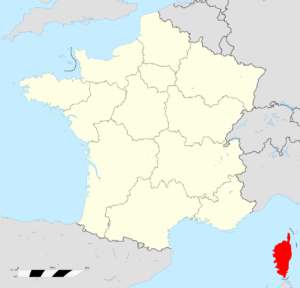CORSICA

Location
Corsica is an island in the Mediterranean Sea, situated between the southeast coast of Provence (France) and the west coast of Tuscany (Italy).
Although geographically closer to Italy, Corsica has been under French rule since 1769 and is counted among the 26 regions of France1.
Grape Variety:
Corsica’s winemakers cultivate a diverse portfolio of grape varieties.
Nielluccio: Known as Corsica’s version of Sangiovese.
Sciacarello: A local variety.
Vermentino: Known as Rolle in Corsica1.
Climate:
Corsica’s climate is Mediterranean, with higher sunshine levels than mainland France and low rainfall.
The island’s varied mesoclimates result from its mountainous terrain.
Soil types are mainly granite-based and rich in silica, contributing to finesse and
minerality in the wines.
Prevailing winds (such as the Libeccio, Mistral, and Gregale) play a role in regulating temperatures and reducing mildew risk.
History:
Corsican winemakers maintain the purest traditions of the terroir.
Despite the remote location, they grow more than 30 grape varieties, including Pinot Noir, Tempranillo, and Barbarossa.
Most of these varieties are used in IGP (Indication Géographique Protégée) wines, while only a handful are used for Corsican AOC (Appellation d’Origine Contrôlée) wines
Famous Wines:
Corsica produces wines primarily under the regional Vin de Corse (or simply ‘Corse’) appellation.Notable AOPs (Appellations d’Origine Protégée) include:
Porto-Vecchio
Figari
Sartene
Calvi
Cap Corse (which also produces sweet, white Muscat du Cap Corse)2.